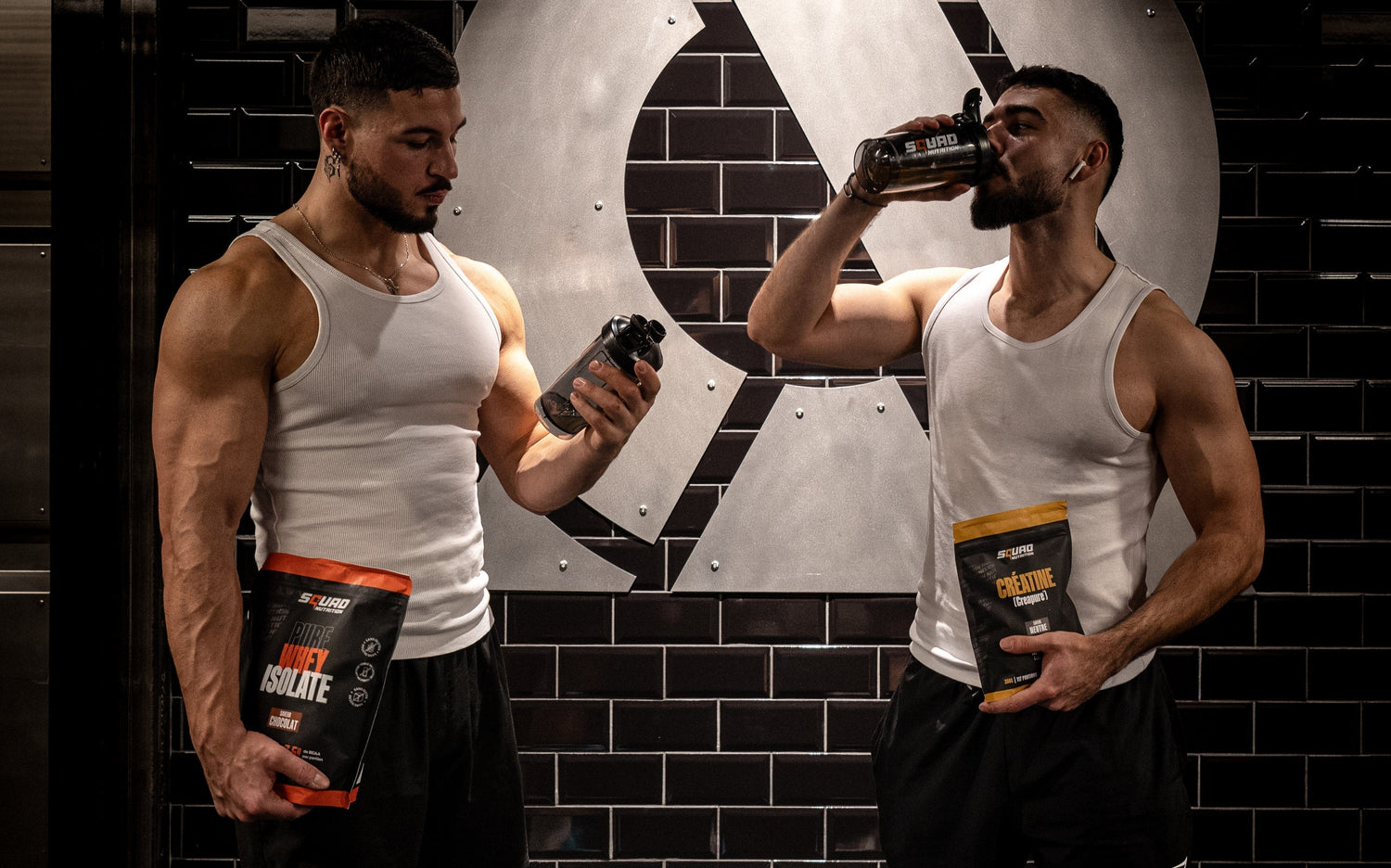
Common Whey Mistakes: What You May Be Doing Wrong
You're training hard, eating pretty well, and you've decided to incorporate whey protein into your routine. Good idea! It's one of the most popular supplements in the fitness world, and for good reason: convenient, quick to consume, and effective at stimulating recovery and muscle growth.
But despite all its benefits, whey protein isn't everything, and above all, it doesn't forgive certain mistakes. We often hear phrases like "I'm taking whey protein but I'm not seeing much results" or "I have bloating, is this normal?" In most cases, the problem isn't the product itself, but how it's used.
So here's a quick rundown of the most common mistakes people make with whey, so you can use it optimally without wasting its potential (or your money).
Mistake #1: Consuming it at the wrong time
The first common mistake is to drink your shake at any time of day, without thinking about when your body really needs it. Whey is a fast-absorbing protein. It's therefore particularly useful right after training , when your muscles have been used, are tired, and are waiting for nutrients to repair themselves.
This is called the “anabolic window”: a period of about 30 to 60 minutes post-workout during which your body assimilates protein particularly well. Taking your whey at this time maximizes its effects.
That said, it all depends on your goal. If you're bulking, you can also consume whey as a snack between meals to increase your total calories and protein intake. If you're cutting, it's better to take it strategically, often at breakfast or post-workout to stay satiated and nourish your muscles without blowing your macros.
Everything you need to know about taking whey
Mistake #2: Relying solely on whey
Many people think that whey protein can replace a balanced diet. Big mistake. Whey protein is there to supplement your protein intake, not replace it with your meals. If you're not eating enough vegetables, good fats, quality carbohydrates, or "solid" proteins (meat, fish, eggs, etc.), no shake will make up for it.
It's a bit like building a house on sand: you can put in the most beautiful windows (or the best whey in the world), but if the foundations are shaky, nothing will hold. So start by taking care of your basic diet, and use whey to get closer to your protein needs, not to replace them.
Mistake #3: Consuming too much
This is a mistake that's especially common among highly motivated beginners. They equip themselves, train hard, want to do well... and end up taking three shakes a day. The reasoning? "The more protein I consume, the more muscle I'll build." In reality, it doesn't work like that.
Your body has a limited capacity to absorb and utilize protein over a given period of time. On average, it can absorb about 20 to 30g of protein per meal. Any more than that, and you risk overloading your digestive system... and turning your shake into intestinal discomfort.
The right dose, of course, depends on your weight, activity level, and goal. But for most people, one shake a day is more than enough , provided the rest of their diet is consistent.
Mistake #4: Choosing poor quality whey
We understand: shelves and stores are overflowing with products, flavors, and sizes. And sometimes, we're tempted by the bargain prices. But beware: not all whey is created equal. Some unscrupulous brands use low-quality raw materials, excessively high sugar levels, or stuff their formulas with artificial additives.
The result? A protein that is poorly digested, ineffective... and may even have the opposite effect to the one intended. A good whey protein must contain a high protein content (ideally more than 70%), little or no sugar, few lipids, and above all, a reliable and traceable origin.
At Squad Nutrition, we favor products made in France , from quality milk, with transparent compositions. If you really want to invest in your progress, start by choosing a good base.

Mistake #5: Forgetting to hydrate
This one often falls by the wayside, yet it's essential. Consuming more protein increases the workload on your kidneys, which must eliminate more nitrogenous waste. This isn't alarming if you're healthy, but it does require one condition: drinking enough.
If you take whey protein, especially regularly, remember to drink at least 2 liters of water per day . This not only aids in protein digestion, but also improves your recovery, energy levels, and even your workout performance.
And no, your shaker doesn't count as hydration!
Mistake #6: Expecting magical results
Whey is a great supplement, but it's not a magic wand. If you rely on it to do all the work, you're likely to be disappointed. Building muscle, losing fat, improving performance... it all takes time, discipline, and consistency.
Whey will give you a boost, provided you have already established a consistent lifestyle : regular training, appropriate diet and quality sleep.
Mistake #7: Never varying your protein sources
Finally, a more subtle but equally important mistake: relying solely on whey protein to cover your needs. Yes, it's convenient, quick to digest, and contains a lot of protein. But your body also needs diversity to function at 100%.
Alternating between animal sources (meat, fish, eggs) and plant sources (legumes, tofu, plant proteins) provides you with a better balance of amino acids and vitamins, and limits digestive problems. Whey is an asset, but it's only one element among others in your nutritional plan.
Ultimately, whey protein can definitely make a difference in your workout routine, provided it's used correctly. By avoiding these common mistakes (whether it's poor timing, overdosing, choosing the wrong product, or eating an unbalanced diet), you'll be able to take full advantage of its benefits.
And if you still have doubts, come to the store: our teams are there to help you see things more clearly, to adapt your whey intake to your profile, and above all to support you towards your goals, whatever they may be.